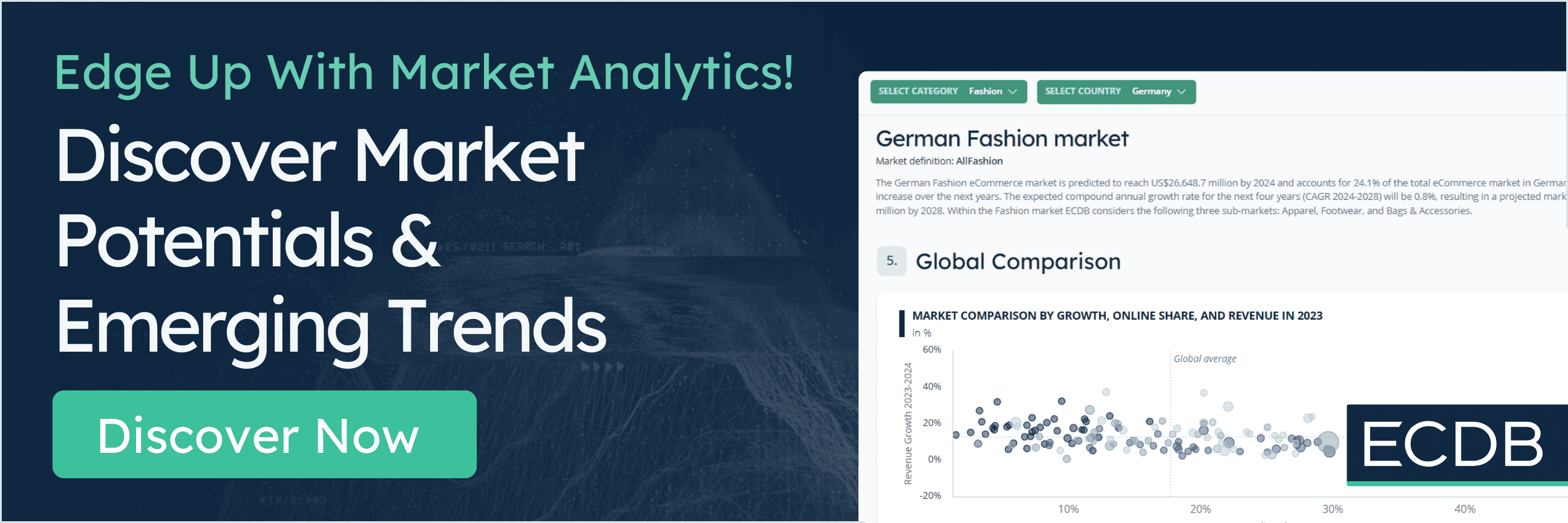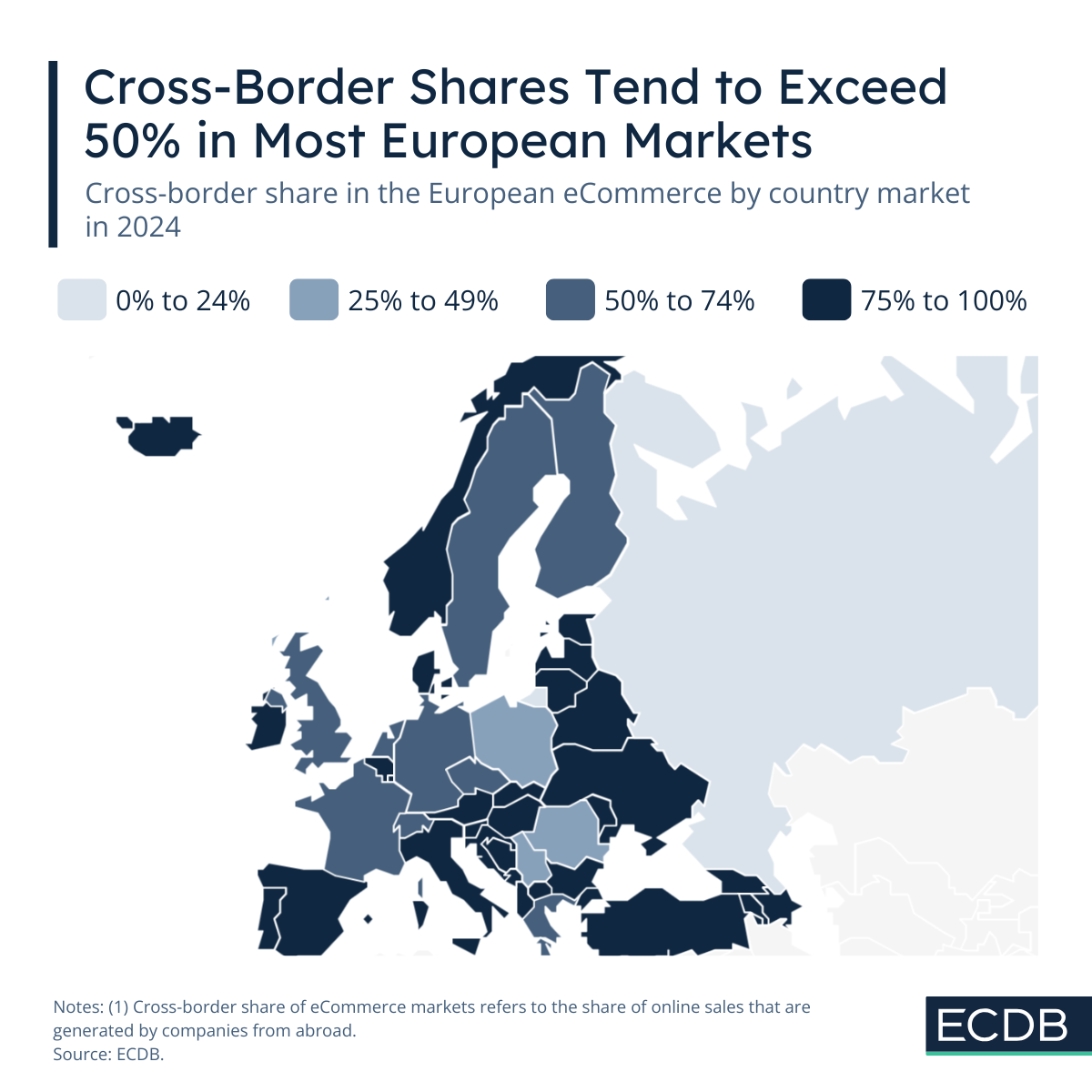Cross-border eCommerce is more relevant than ever, given current tariff talks. Europe is a leading region for cross-border eCommerce due to the intra-continental trade facilitated by the European Union and bilateral free trade agreements.
Looking at cross-border shares across Europe, most of the leading cross-border retailers are based in Northern Europe, with expansion into the rest of the continent. Where the cross-border share is highest, the dependence on international companies in the online market is evident.
A Strong Domestic eCommerce Market Lowers the Cross-Border Share
Indeed, we can find more countries with a lower cross-border share in the North of Europe than in the South and East. However, this has less to do with their Northern location and more to do with a variety of factors, including digitization, player landscape, and geographical features.
What Does Cross-Border Share in eCommerce Mean?
In eCommerce, cross-border share refers to the percentage of a company's net sales generated outside its main market. Extending this to a market view, cross-border share shows how much of the online market is generated by companies from abroad.
For example, Zalando generates 69% of its marketplace GMV in countries outside of Germany. Its cross-border share is therefore 69%. In a country like Germany, 58% of market revenues are generated by companies that have their main business focus and therefore also their main country of operations outside Germany.
Countries such as France, Germany, and the Netherlands have local eCommerce businesses like Bol, Zalando, and Carrefour that thrive both domestically and internationally.
These countries' well-developed logistics networks, mature local competition, and large domestic markets reduce their reliance on international companies, at least compared to the other markets; cross-border shares tend to be at a high rate across the board, which is due to the international nature of eCommerce and the dominance of companies like Amazon.
This is why even countries like Germany, which has a highly developed domestic eCommerce industry, have a cross-border share approaching 60%.
South and East Tend to Import More From International eCommerce
More countries with a high cross-border share can be found in the South and East of Europe. Spain, Portugal, Croatia, Turkey, and Lithuania have shares above 75%. Compared to countries with lower cross-border shares, these countries have fewer domestic eCommerce players, which pushes consumers to shop from international platforms.
Additionally, non-domestic eCommerce marketplaces or online stores often offer cheaper products (e.g., Temu or Amazon) or a better selection than what is available locally. Also, consumers buying products on a non-domestic platform doesn’t mean there is no exchange of domestic goods, particularly regarding marketplaces or physical retail.
Exceptions With a Very Low, or Unusually Low Share
Yet, not all countries in this region follow the same pattern. Poland, Romania, Serbia and Greece diverge. All these markets have a comparatively low cross-border share, which means that these online markets rely on a higher number of domestic retailers than is usual in Europe.
In Poland, Allegro is the number one player, even at a significant lead over Amazon. Romania, Serbia, and Greece all have a number of domestic players in the top retailers list. For most of them, Amazon does not even operate in the country, or just very recently opened an own domain (as in the case of Poland).










